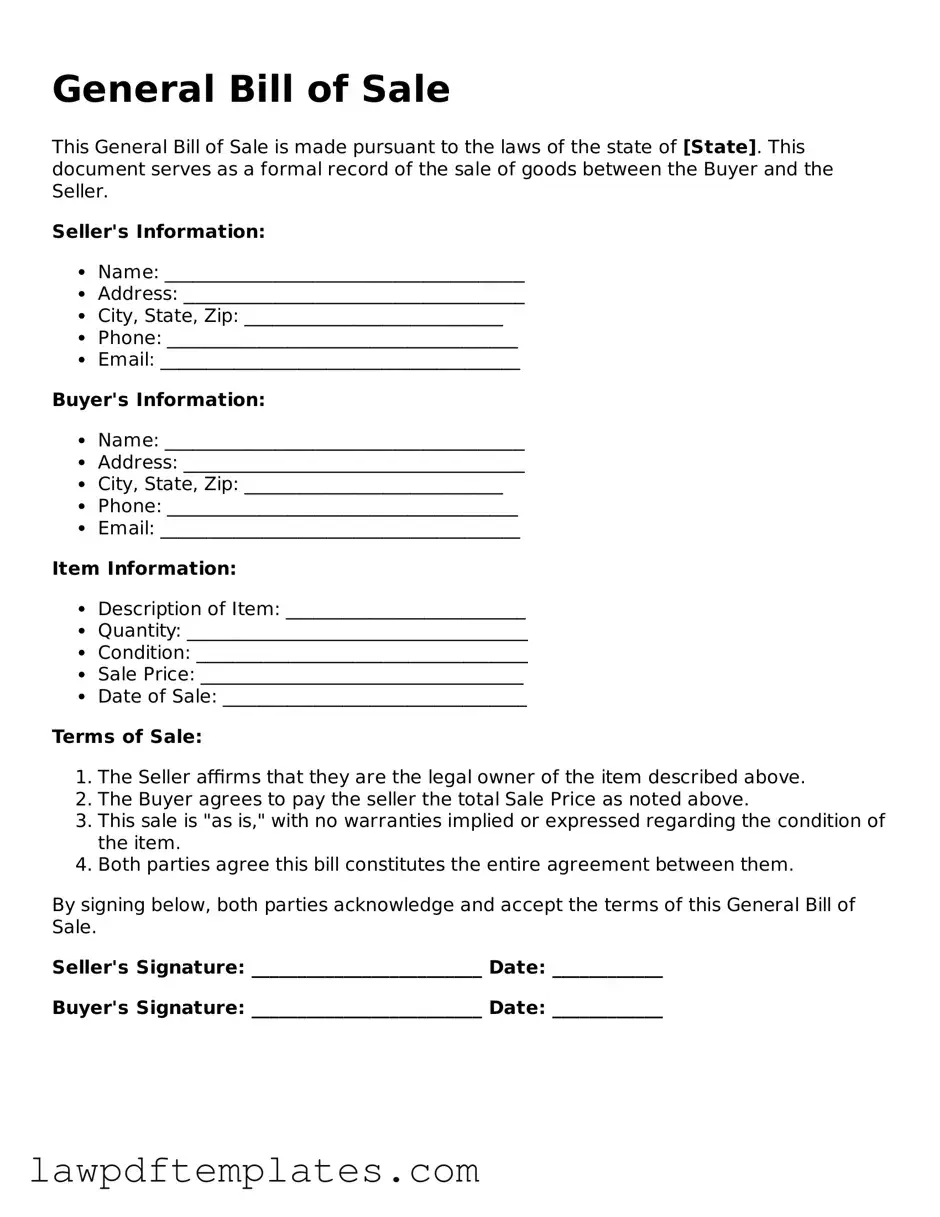General Bill of Sale
This General Bill of Sale is made pursuant to the laws of the state of [State]. This document serves as a formal record of the sale of goods between the Buyer and the Seller.
Seller's Information:
- Name: _______________________________________
- Address: _____________________________________
- City, State, Zip: ____________________________
- Phone: ______________________________________
- Email: _______________________________________
Buyer's Information:
- Name: _______________________________________
- Address: _____________________________________
- City, State, Zip: ____________________________
- Phone: ______________________________________
- Email: _______________________________________
Item Information:
- Description of Item: __________________________
- Quantity: _____________________________________
- Condition: ____________________________________
- Sale Price: ___________________________________
- Date of Sale: _________________________________
Terms of Sale:
- The Seller affirms that they are the legal owner of the item described above.
- The Buyer agrees to pay the seller the total Sale Price as noted above.
- This sale is "as is," with no warranties implied or expressed regarding the condition of the item.
- Both parties agree this bill constitutes the entire agreement between them.
By signing below, both parties acknowledge and accept the terms of this General Bill of Sale.
Seller's Signature: _________________________ Date: ____________
Buyer's Signature: _________________________ Date: ____________
